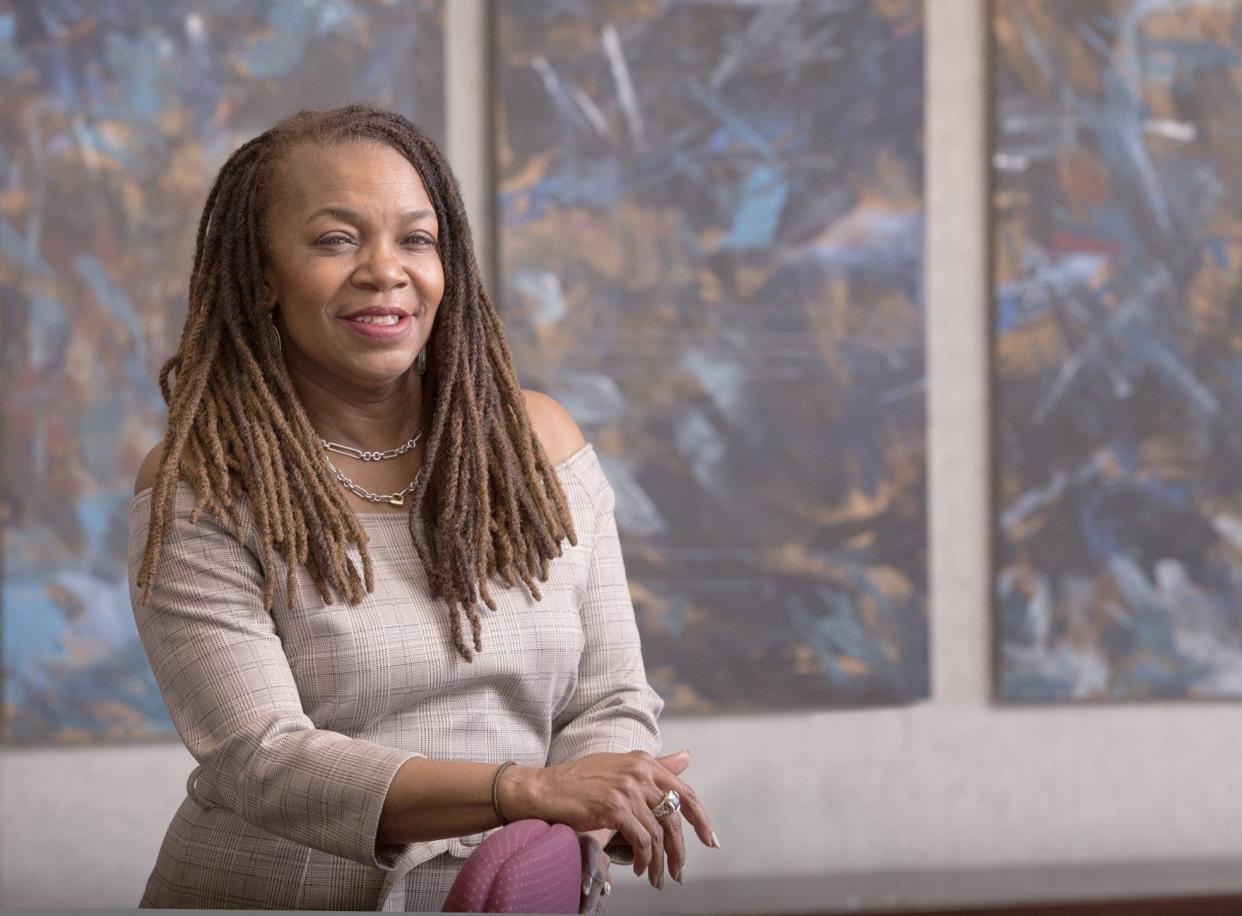Columbus residents 'hunger for a chance' yet region ranks town bottom for racial inclusion

Stephanie Hightower is president and CEO of the Columbus Urban League. The former Ohio State University hurdler and four-time U.S. champion qualified for the 1980 Moscow Olympics, but was prevented from completing due to a U.S. boycott.
Like many in central Ohio, I am thrilled and inspired by the promise of a Silicon Heartland.
With billions of dollars in public and private investment, thousands of new high-wage jobs at companies like Intel and Amazon, and likely expansions of hundreds of small businesses — we stand upon the precipice of a once-in-a-lifetime opportunity.
This breakthrough means even more when I reflect on Ohio’s recent history. Our people watched and suffered as steel mills and manufacturing plants shuttered, urban neighborhoods and small towns lost their economic heartbeat, and despair drove many to poverty and addiction.
What a blessing to have collective hope again.
A promise open to all
And yet, our mission now should extend beyond transforming great possibilities into achievable realities. We also must make the Silicon promise real for everyone. Maybe for the first time, maybe as a national and even international model, Central Ohio can be a truly inclusive economy.
Experts like McKinsey & Company define economic inclusion as the point at which people earn enough to afford life essentials and are “productive, fulfilled and fully empowered” to make choices. The Rockefeller Foundation says a community has achieved economic inclusion when residents have open access to meaningfully participate in a growing economy that provides sustainable stability.
'Diversity' not just a buzzword. Columbus must embrace it during technological evolution.
As captured in a recent survey commissioned by your Columbus Urban League, underrepresented people welcome real inclusion.
More than 3,500 people responded to our survey, and a majority expressed intense interest in advanced manufacturing and construction jobs, even when they understood that they could lose income or be required to undergo extensive upskilling to secure those jobs.
These are working people. Almost three-fourths work full time, and while they’ve heard something about the jobs of the future, their first and most important need was for detailed information from a trusted resource.
It only makes sense that they ask for objective guidance. Most appear to contribute significantly, if not solely, to their household income. Change could be high-risk for them and those they support.
They want to do more, and they want to do better. Eighty-four percent said if CUL helped them secure a better-paying job, they would invest their time and energy in learning experiences that strengthen their money management skills and help them grow wealth.
How does Columbus rank for economic inclusion?
While people hunger for a chance, it does not appear that we’ve done enough to respond. According to a recent Brookings Institute study comparing 54 cities, the Columbus Metropolitan area ranks among the worst for racial inclusion – 51st for our poverty rate gap and 52nd for our employment gap.
It’s in everyone’s benefit to fix this. My colleague Kenny McDonald, CEO of the Columbus Partnership summed it up well: “The Columbus Region is evolving… the innovations and technologies we perfect here will be essential to America’s economic future and international security. Essential to their success are prospective employees from underrepresented communities who share in our collective optimism. They’re interested, willing, and ready to gain the skills and support they need to secure and succeed in the jobs of the future.”
In other words, as I often shorthand it, everybody wins when everybody’s in. This fact has been thoroughly and convincingly documented. McKinsey estimates the U.S. economy would grow by $2 trillion annually if we enlarged our pool of higher-wage workers.
Just as we create and implement strategies to incentivize employers to locate or expand operations here or we customize training to match job requirements and the skill sets of the available labor pool, we need a regional strategy to reach, engage, train, and retain future employees from underrepresented communities.
My team and I realize that this need calls us to reinvest and reinvigorate our approach to career services for the communities we serve.
We’ve been working hard to adopt new models, and we are seeking federal investment to revamp our facilities and attract the leadership and talent to deliver what’s needed. We’re also forging a deeper and more thoughtful partnership with Columbus State Community College. Together, we can help more people secure training, education, and the support they need, such as childcare or transportation, to make a successful career transition.
The Heartland will shine brightly with a new silicon veneer, but let’s also not miss a golden opportunity.
As we bury the Rust Belt and polish the Tech Belt, let’s come together and co-create a world-class inclusive economy. We can build wealth in every neighborhood, and when we do, we will maximize our innovative capacity and achieve unprecedented success.
Stephanie Hightower is president and CEO of the Columbus Urban League. The former Ohio State University hurdler and four-time U.S. champion qualified for the 1980 Moscow Olympics, but was prevented from completing due to a U.S. boycott.
This article originally appeared on The Columbus Dispatch: Columbus among worst for racial inclusion. We must do better for all.

